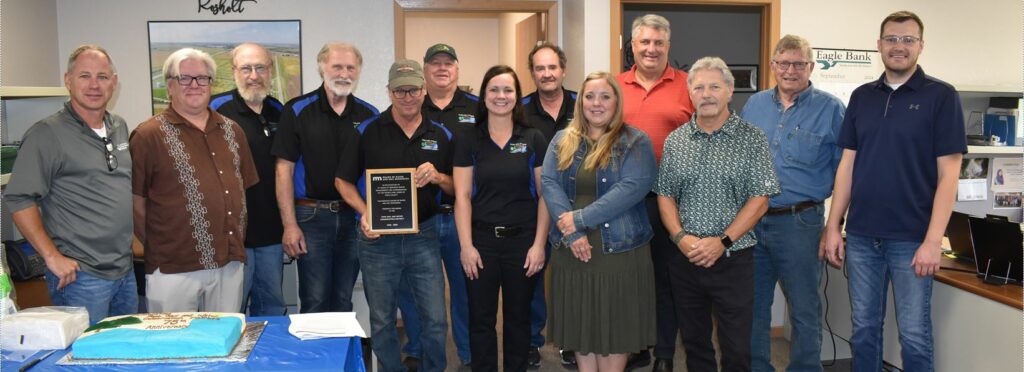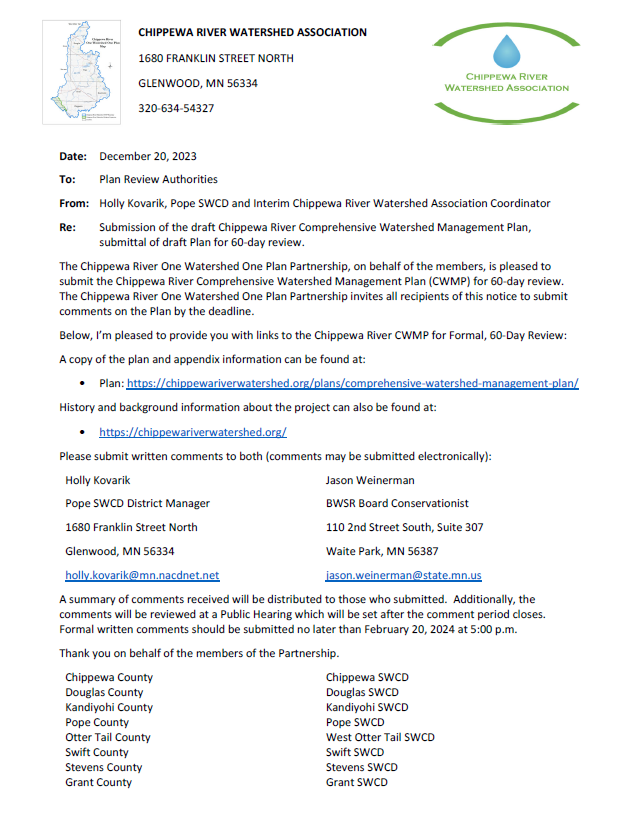
Pope Soil and Water Conservation District was recognized on September 17th by the Board of Water and Soil Resources for 75 years of bringing water management and conservation to the people and lands of Pope County 1949-2024.
In attendance during this recognition are pictured left to right below:
Jeff Hellermann (USDA Natural Resources Conservation Service District Conservationist), Jason Weinerman (Minnesota Board of Water and Soil Resources Board Conservationist), D. Gary Reents (Pope SWCD Board Member), Randy Pederson (Pope SWCD Board Member), Keith Nygaard (Pope SWCD Board Member), Randy Mitteness (Pope SWCD Board Member), Holly Kovarik (Pope SWCD District Manager), Tom Talle (Pope SWCD Board Member), Nicole Brede (Pope SWCD Habitat Resource Specialist), Senator Torrey Westrom, Dave Iverson (City of Glenwood Administrator), Representative Paul Anderson, and Alex Fellbaum (USDA Farm Service Agency Pope and Douglas County Offices Executive Director)
Pope SWCD Staff not pictured unable to attend the recognition: Christopher Borash (Pope SWCD Conservation Technician), Kimberly DeMorett (Pope SWCD Resource and Outreach Technician), and Mason Stewart (Pope SWCD Conservation Technician)
Photo Credit: Tim Douglass Pope County Tribune
